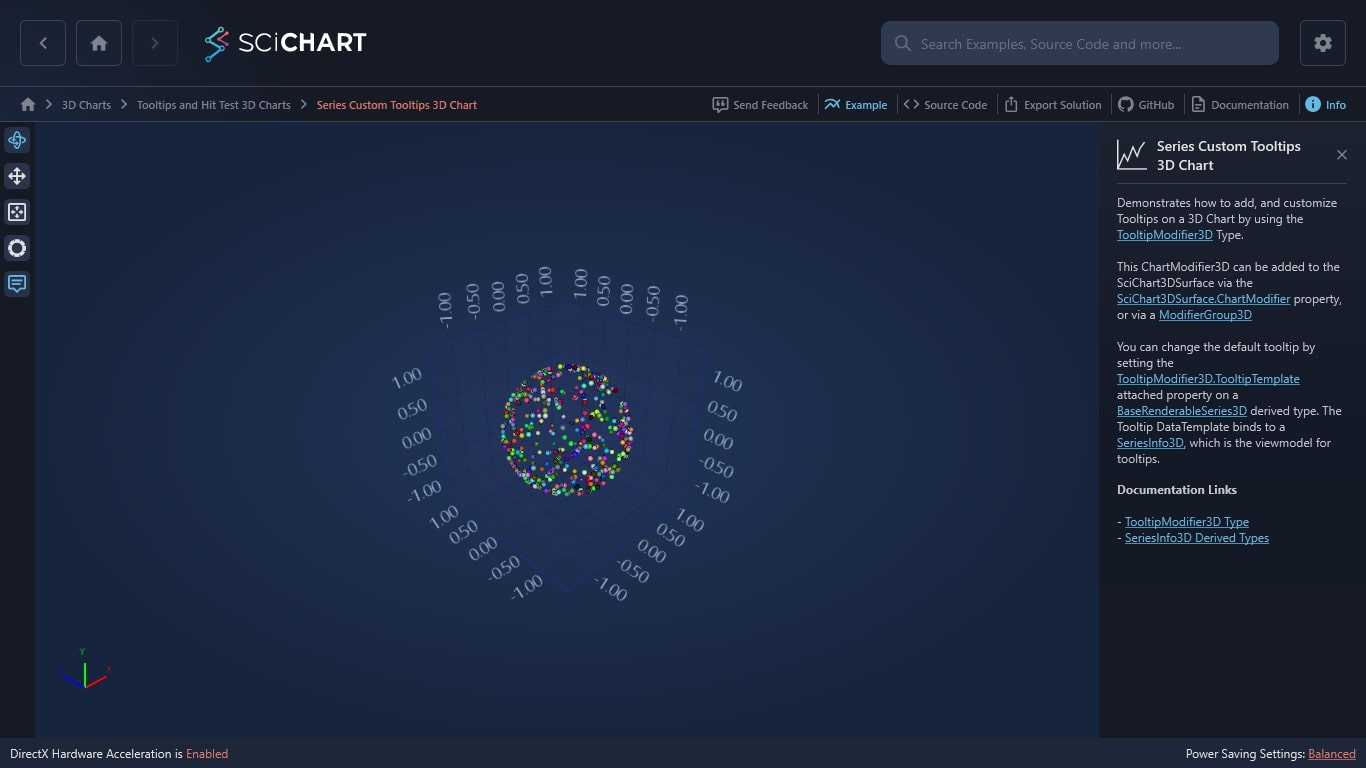WPF Chart - Examples
SciChart WPF ships with hundreds of WPF Chart Examples which you can browse, play with, view the source-code and even export each WPF Chart Example to a stand-alone Visual Studio solution. All of this is possible with the new and improved SciChart WPF Examples Suite, which ships as part of the SciChart WPF SDK.
Demonstrates how to add, and customize Tooltips on a 3D Chart by using the TooltipModifier3D Type.
This ChartModifier3D can be added to the SciChart3DSurface via the SciChart3DSurface.ChartModifier property, or via a ModifierGroup3D
You can change the default tooltip by setting the TooltipModifier3D.TooltipTemplate attached property on a BaseRenderableSeries3D derived type. The Tooltip DataTemplate binds to a SeriesInfo3D, which is the viewmodel for tooltips.
Documentation Links
The C#/WPF source code for the WPF 3D Chart Custom Tooltip Template Example example is included below (Scroll down!).
Did you know you can also view the source code from one of the following sources as well?
- Clone the SciChart.WPF.Examples from Github.
- Or, view source in the SciChart WPF Examples suite.
- Also the SciChart WPF Trial contains the full source for the examples (link below).


